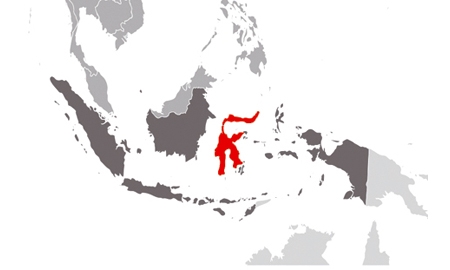
Lying directly in the center of Indonesia, the Sulawesi Economic Corridor is poised to be the center for production and processing of national agriculture, plantation, fisheries, oil & gas, and mining.
While agriculture (rice, corn, cocoa, soybean and cassava) is the largest contributor to the region’s Gross Regional Domestic Product (GRDP) and absorbs about half the total workforce, the sector is hindered by a lack of adequate economic and social infrastructure, such as roads, electricity, water and healthcare.
On a national scale, Sulawesi is the third largest food producer in Indonesia; nevertheless, productivity is lower compared to other regions owing to low fertilizer use, a limited access to modern agricultural equipment, and an inadequate irrigation network.
The MP3EI for Sulawesi targets the optimization of land use, the creation of new rice paddy fields, and the rehabilitation and conservation of agricultural land. The plan also addresses financing for farmers, the creation of quality storage to reduce potential loss of quantity and value of post-harvest products, and improving access roads and irrigation facilities. In addition, a downstream sector will be developed to add value to Sulawesi’s commodities. As Dr. Syahrul Yasin Limpo, Governor of South Sulawesi, says, “We expect that our agriculture sector can become more agro-industry in the future.”
Within Southeast Asia, Indonesia is the largest producer of fishery products, and Sulawesi is the biggest producer nationally. The industry is a powerful contributor to the corridor’s economic growth yet certain challenges, namely overfishing, have raised red flags in its continued expansion. The Master Plan aims to develop aquaculture as well as increase added-value products and activities for seaweed processing.
Another one of Sulawesi’s strengths lies in nickel: it boasts the most advanced nickel production in a country that ranks fourth among global nickel producers. Where the national government would like to see more growth, however, is in the downstream industry, especially nickel product refining.
The last economic anchor of the MP3EI for Sulawesi is oil and gas. Although reserves of these fossil fuels are considered to be low, they have not been properly identified and explored. Moreover, as Indonesia’s overall oil reserves continue to decline, Sulawesi could help prolong their lifeline.
0 COMMENTS